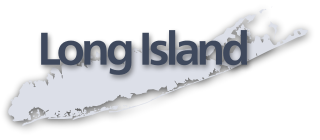Transportation
Lists of:
The following is a list of topics related to New York City, New York, United States.
Lists dealing with architecture:
Lists of:
Neighborhoods:
Streets:
Other:
Lists of:
Lists of:
Lists of:
The borough presidents are the chief executives of the five boroughs of New York City. For most of the city's history, the office exercised significant executive powers within each borough, and the five borough presidents also sat on the New York City Board of Estimate, which was abolished in 1990. After the Board of Estimate was disbanded, the borough presidents were stripped of a majority of their powers in the government of New York City.

The flags of New York City include the flag of New York City, the respective flags of the boroughs of The Bronx, Brooklyn, Manhattan, Queens, and Staten Island, and flags of certain city departments. The city flag is a vertical tricolor in blue, white, and orange and charged in the center bar with the seal of New York City in blue. The tricolor design is derived from the flag of the Dutch Monarchy—the Prince's Flag—as used in New Amsterdam in 1625, when that city became the capital of New Netherland.

The boroughs of New York City are the five major governmental districts that comprise New York City. They are the Bronx, Brooklyn, Manhattan, Queens, and Staten Island. Each borough is coextensive with a respective county of the State of New York: The Bronx is Bronx County, Brooklyn is Kings County, Manhattan is New York County, Queens is Queens County, and Staten Island is Richmond County.

The neighborhoods in New York City are located within the five boroughs of the City of New York. Their names and borders are not officially defined, and they change from time to time.

Since its founding in 1625 by Dutch traders as New Amsterdam, New York City has been a major destination for immigrants of many nationalities who have formed ethnic enclaves, neighborhoods dominated by one ethnicity. Freed African American slaves also moved to New York City in the Great Migration and the later Second Great Migration and formed ethnic enclaves. These neighborhoods are set apart from the main city by differences such as food, goods for sale, or even language. Ethnic enclaves provide inhabitants security in work and social opportunities, but limit economic opportunities, do not encourage the development of English speaking, and keep immigrants in their own culture.

Nearly every major type of transportation serves Long Island, including three major airports, railroads and subways, and several major highways. The New York City Subway only serves the New York City boroughs of Brooklyn and Queens. There are historic and modern bridges, recreational and commuter trails, and ferries, that connect the boroughs of Queens and Brooklyn to Manhattan, the south shore with Fire Island and Long Island's north shore and east end with the state of Connecticut.

Community boards of the Bronx are the 12 New York City community boards in the borough of the Bronx, which are the appointed advisory groups of the community districts that advise on land use and zoning, participate in the city budget process, and address service delivery in their district.
These are lists of New York City landmarks designated by the New York City Landmarks Preservation Commission:

The community boards of the New York City government are the appointed advisory groups of the community districts of the five boroughs. There are currently 59 community districts: twelve in the Bronx, eighteen in Brooklyn, twelve in Manhattan, fourteen in Queens, and three in Staten Island.

The 1969 New York City mayoral election occurred on Tuesday, November 4, 1969, with incumbent Liberal Party Mayor John Lindsay elected to a second term. Lindsay defeated the Democratic candidate, New York City Comptroller Mario Procaccino, and the Republican candidate, state senator John Marchi.
In the New York City government, each of the five boroughs has a borough board composed of the borough president, City Council members from the borough, and the chairperson of each community board in the borough. The borough boards can hold or conduct public or private hearings, adopt by-laws, prepare comprehensive and special purpose plans and make recommendations for land use and planning, mediate disputes and conflicts among two or more community boards, submit a comprehensive statement of the expense and capital budget priorities and needs, evaluate the progress of capital developments and the quality and quantity of services provided by agencies, and otherwise consider the needs of the borough.

The following outline is provided as an overview of and topical guide to New York City:

The 2021 New York City borough president elections were held on November 2, 2021. Four of the five incumbent borough presidents were unable to run for reelection due to term limits. Only the Queens borough president was eligible to seek re-election after winning a special election in 2020.
The following is an alphabetical list of articles related to New York City. New York City is a city in the United States state of New York.